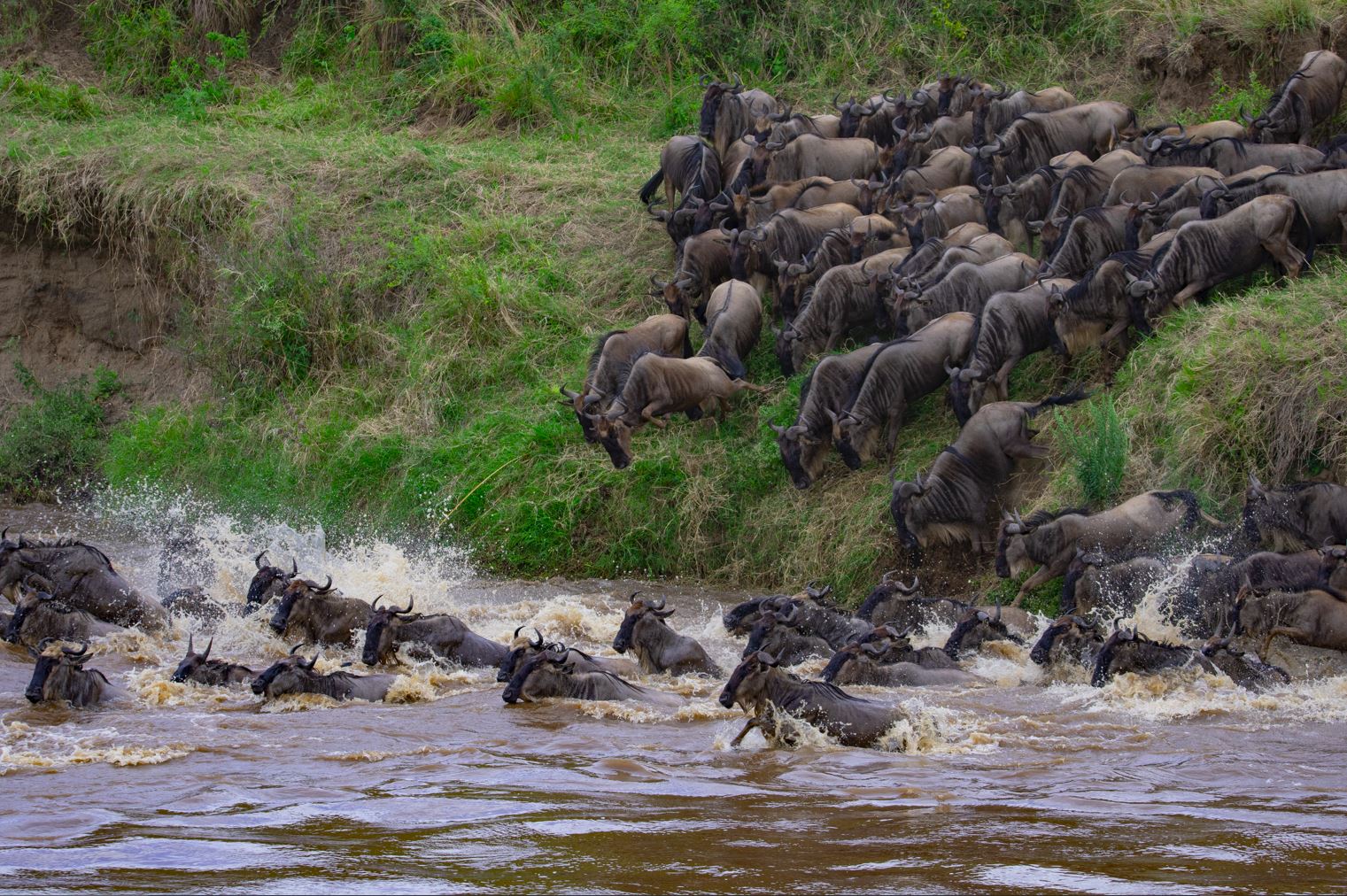Zanzibar
Home > Beach Holidays Zanzibar Island Enjoy The Luxuries of Zanzibar Zanzibar Beach Safaris Zanzibar,…
Wildlife Safaris | Beach Holiday | Hiking
From Maasai Mara to Serengeti

When one thinks of the Great Migration, pictures of thundering herds of wildebeest plunging into muddy rivers teeming with toothy (and starving) crocodiles come to mind. And while watching these river crossings is a dramatic and thrilling experience, there is a hidden migration season that is often overlooked.
The Great Migration’s calving season typically occurs between January and February of each year. The migratory route hasn’t changed much over the years, but the exact timing of the journey varies based on seasonal rainfall, so these timings are merely a guide.
The herds usually migrate Tanzania’s Serengeti between January and March in seeking out fresh grass. The wildebeest migrate as far south as the Ngorongoro Conservation Area, but they don’t quite make it inside the actual Crater. There, they spread out across the lush plains to feast on the new grasses that have sprung following the rains. These plains, with their abundance of nourishment, are also the perfect place for female wildebeest to give birth.
The wildebeest aren’t traveling alone; they’re accompanied by large numbers of zebra and gazelle, which serve the useful purpose of eating the longer grasses that are less appetizing to young wildebeest. After the zebra and gazelle have finished grazing, the tender, nutritious shoots are left exposed and are ideal for young wildebeest calves to easily nibble on.



The animals migrate south to graze and give birth for a reason. It turns out that the sweet grasses of the southern Serengeti are not only delicious, but also the ideal nourishment for young wildebeest to consume during their first few weeks.
Why is the grass here so nourishing? The shocking fact goes back thousands of years to a highly volcanic period in the area around Ngorongoro. The ash that these erupting volcanoes throw forth was blown over the plains of Ndutu and settled here, fertilizing and nourishing the soil and making the grasses that grow here just tempting to mother wildebeest and their young.
On these vast plains near Ndutu, something quite remarkable takes place. Within a two- to three-week period, more than half a million wildebeest give birth. In a single day, up to 8000 wildebeest calves can be born.
Of course, this makes for some sweet and lovely moments, but don’t be deceived to believe there isn’t drama involved.
Even though wildebeest calves are masters at joining the herds shortly after birth, this does not guarantee that opportunistic predators aren’t seeking for a way to make a meal of the weak and the vulnerable.
The presence of predators in the area increases to an all-time high at this time of year, which should not come as a surprise given the large number of baby wildebeest stumbling around on their wobbly legs. A simple meal, though, is not always a guarantee!
Since they have been using this path for years, these mothers are familiar with the majority of the predators’ techniques. Instinctively, moms of wildebeest know that the shorter grass plains are the safer places to give birth since they make it easier to see approaching predators. To provide the youngest and most vulnerable new members of the herd the best chance of surviving, additional moms join them at this location. Together, they actually build a protective barricade around them.
Though you will have the chance to see not only the older, more experienced predators. To give their young the best chance of surviving, they have also coordinated their birthing schedules to correspond with the birth of their prey. A mother lion, cheetah, or leopard will have an easier time finding food for her young while also giving them the chance to learn hunting independently when there are thousands of baby wildebeest running around. Young cubs learn crucial lessons that will be crucial to their future success by practicing on young calves before they have to go out and fend for themselves.
A migration safari during the calving season will provide amazing views of wildebeest and their young, as well as an abundance of big cats eager to go on a successful hunt.
In addition to the breathtaking view of the seemingly endless Serengeti plains dotted with grunting, grazing wildebeest as far as the eye can see, there is also plenty of dramatic drama to be seen. Not to mention, there are many of adorable newborn animals.
The greatest place to experience a calving season safari is from one of our tented mobile camps, which travel around the entire year to stay in the center of the activity. The Kenzan ndutu migration camps give visitors a year-round front-row view of the migration’s action.
Home > Migration Season Calving Season: The Great Migration From Maasai Mara to Serengeti What…
Home > Single Post Mt. Kilimanjaro Climbing Article about Hiking and Trekking The best time…